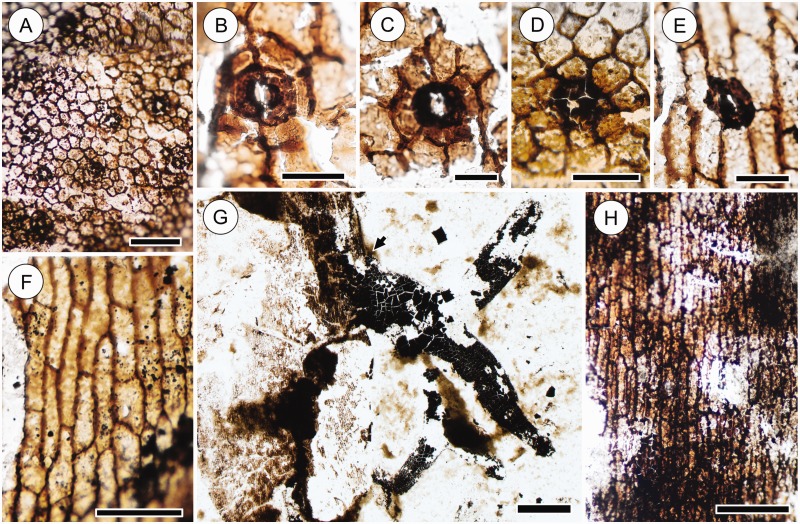Fig. 6.
Epidermal anatomy of leafy stems (A–D) and root-bearing axes (E–H) of the Cottonwood Canyon lycophyte. (A) Leafy stem epidermis showing isodiametric epidermal cells and numerous stomata. Scale bar = 200 µm. HPH 333. (B–D) Details of stomata on leafy stems. Note that epidermal cells surrounding guard cells range from smaller than (B) to similar in size as regular epidermal cells (C, D). Also note variation in the size of epidermal cells surrounding the stoma in (C). Scale bars = 50 µm. HPH 76 (B, C), HPH 333 (D). (E) Detail of one of the rare stomata on a root-bearing axis. Note similarity in size and shape to the leafy stem stomata in (B–D). Scale bar = 50 µm. HPH 330. (F) Epidermis of root-bearing axis showing elongate epidermal cells. Note the absence of stomata. Scale bar = 100 µm. HPH 330. (G, H) Film pull of cuticle of a root-bearing axis at the point of the attachment of a root. Note that whereas the cuticle of the root-bearing axis preserves cellular patterns (H), the root consists of thick carbonaceous material. This sharp transition between the cellular pattern of the axis and the lack thereof in the root (arrow) is interpreted as a lack of cuticle in the root. Scale bar = 1 mm (G). Scale bar = 200 µm (H). HPH 330.

